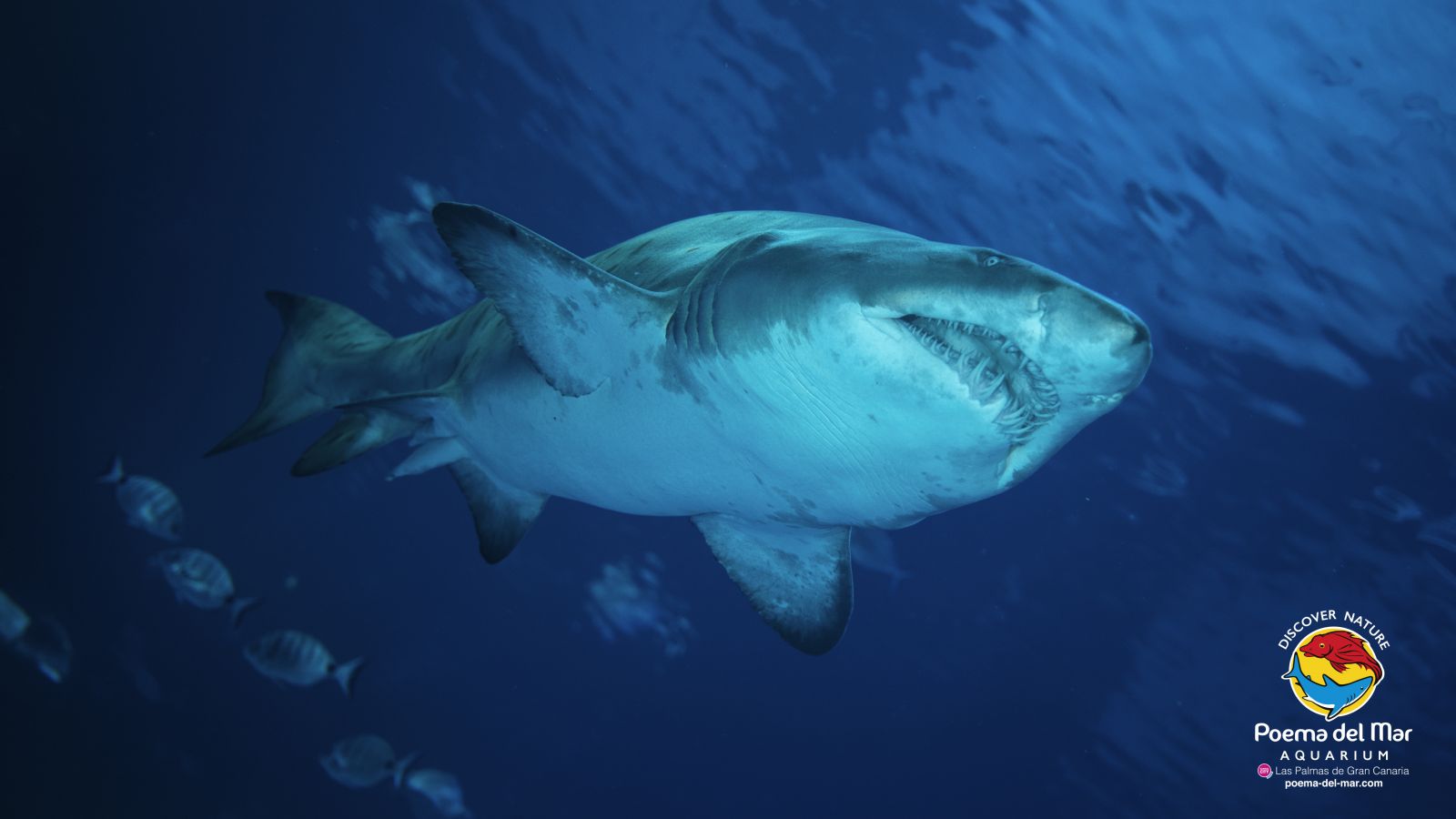Saltwater | Carnivorous | Nocturnal | Atlantic, Indian and Pacific Oceans | Up to 3,30 cm | Up to 35 years
The sand tiger shark (Carcharias taurus), also known as the Dakota bull shark, is a robust shark with a menacing appearance yet a remarkably docile nature. It is found in a variety of warm and temperate seas around the world. Notably, it is recognised for its long, protruding teeth, bulky body, and unique ability to regulate buoyancy by swallowing air, allowing it to float effortlessly without moving.
In contrast to its fearsome look, the sand tiger shark is generally calm in behaviour and shows a strong preference for sandy seabeds and coastal reefs.
Geographical distribution
The sand tiger shark is found in the Atlantic, Indian and Pacific Oceans, as well as in seas such as the Mediterranean and Adriatic. Its range extends from the coasts of the United States (from Maine Bay to Florida, the Gulf of Mexico, the Bahamas and Bermuda), Brazil and Argentina, to Europe, West Africa, Australia, Japan and South Africa.
It generally prefers shallow coastal waters, usually between 20 and 200 metres deep, and often remains within about one kilometre of its aggregation sites.
 Habitat
Habitat
- It lives along the coast, from surf zones to deep bays, mainly on the outer continental shelf at depths between 1 and 191 metres.
- It can be found either in small groups or alone, and tends to swim slowly near the seabed or mid-water, especially at dusk.
- It regulates its buoyancy by swallowing air, which allows it to float calmly while resting.
This species often undertakes long migrations of around 100 km, being born in colder waters and later moving towards warmer regions for reproduction and gestation.
 Lifestyle and behaviour
Lifestyle and behaviour
The sand tiger shark is a nocturnal species, generally becoming more active towards the end of the day and throughout the night. Despite its rather menacing appearance, it is usually peaceful towards humans. While it may occasionally form temporary groups for migration or reproduction, it spends much of its life in solitude.
Reproduction in this species is ovoviviparous. The female produces between 16 and 23 eggs, with a gestation period lasting between nine and twelve months. Interestingly, only a single pup is usually born, as the species is characterised by intrauterine cannibalism, a phenomenon whereby embryos consume one another, leaving only the strongest to survive.
 Diet
Diet
Natural habitat
- Wide variety of fish of different sizes.
- As well as small sharks, crustaceans and cephalopods.
- On occasion, it may also prey on other minor species of sharks.
Under human care
-
Its diet typically consists of pieces of fish and other animal-based preparations, along with shellfish and a variety of foods adapted to its nutritional needs.
 Conservation status
Conservation status

The sand tiger shark is listed as Critically Endangered by the IUCN. Its main threats include commercial overfishing and bycatch, as well as habitat degradation and the decline of prey in coastal areas. In addition, the species is frequently kept for display and trade in aquariums, which further impacts wild populations.
Therefore, it is essential to intensify conservation and protection efforts to prevent the irreversible decline of this remarkable species in our seas.
